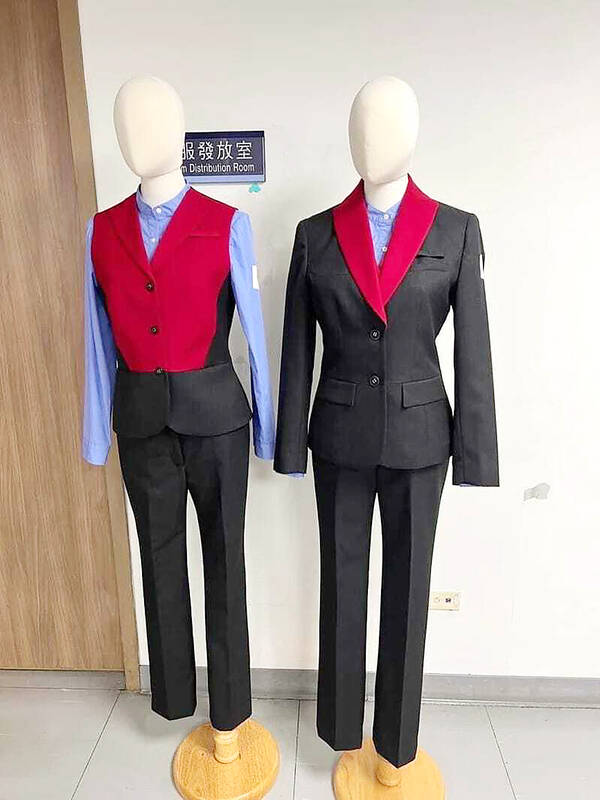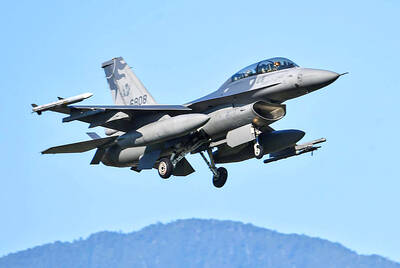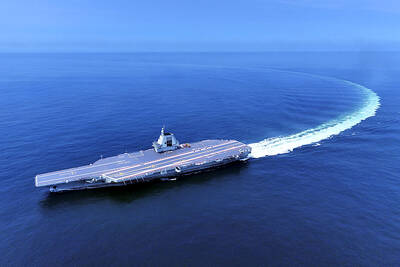More Taiwanese airlines have pledged to relax uniform requirements for female flight attendants, allowing options such as trousers, following a government watchdog report saying that previous policies constituted gender discrimination.
China Airlines, for instance, introduced an alternative trousers-based uniform option on Saturday for female cabin crew, featuring a patchwork design in its signature colors — blue, red and black.
In a statement, the carrier emphasized its commitment to gender equality, saying that female flight attendants in the future would be able to choose between trousers and skirts to better accommodate their individual preferences.

Photo: CNA
Similarly, Starlux Airlines announced that it adjusted its cabin crew dress code on Sept. 24, allowing female employees to select either skirts or trousers when renewing their uniforms.
The airlines’ decision came after a report from the Control Yuan’s National Human Rights Commission (NHRC) in July, which found that the dress codes of Taiwanese airlines violated the gender discrimination provisions of the Convention on the Elimination of All Forms of Discrimination Against Women (CEDAW).
The report, conducted in response to a complaint filed by the Taoyuan Flight Attendants’ Union last year, found that most Taiwanese airlines have different dress codes for male and female cabin crew.
In particular, female cabin crew are subject to highly specific requirements regarding hair and makeup, according to the report.
As a result, the NHRC urged the airlines to take a proactive stance in complying with CEDAW principles and introduce a trousers-based alternative uniform for female cabin crew.
Budget airline Tigerair Taiwan, China Airlines and Starlux are the only Taiwan-based airlines to offer a trousers-based uniform option for female cabin crew.

The first two F-16V Bock 70 jets purchased from the US are expected to arrive in Taiwan around Double Ten National Day, which is on Oct. 10, a military source said yesterday. Of the 66 F-16V Block 70 jets purchased from the US, the first completed production in March, the source said, adding that since then three jets have been produced per month. Although there were reports of engine defects, the issue has been resolved, they said. After the jets arrive in Taiwan, they must first pass testing by the air force before they would officially become Taiwan’s property, they said. The air force

The Chinese People’s Liberation Army Navy’s (PLAN) third aircraft carrier, the Fujian, would pose a steep challenge to Taiwan’s ability to defend itself against a full-scale invasion, a defense expert said yesterday. Institute of National Defense and Security Research analyst Chieh Chung (揭仲) made the comment hours after the PLAN confirmed the carrier recently passed through the Taiwan Strait to conduct “scientific research tests and training missions” in the South China Sea. China has two carriers in operation — the Liaoning and the Shandong — with the Fujian undergoing sea trials. Although the PLAN needs time to train the Fujian’s air wing and

STRIKE: Some travel agencies in Taiwan said that they were aware of the situation in South Korea, and that group tours to the country were proceeding as planned A planned strike by airport personnel in South Korea has not affected group tours to the country from Taiwan, travel agencies said yesterday. They added that they were closely monitoring the situation. Personnel at 15 airports, including Seoul’s Incheon and Gimpo airports, are to go on strike. They announced at a news conference on Tuesday that the strike would begin on Friday next week and continue until the Mid-Autumn Festival next month. Some travel agencies in Taiwan, including Cola Tour, Lion Travel, SET Tour and ezTravel, said that they were aware of the situation in South Korea, and that group

Taiwanese celebrities Hank Chen (陳漢典) and Lulu Huang (黃路梓茵) announced yesterday that they are planning to marry. Huang announced and posted photos of their engagement to her social media pages yesterday morning, joking that the pair were not just doing marketing for a new show, but “really getting married.” “We’ve decided to spend all of our future happy and hilarious moments together,” she wrote. The announcement, which was later confirmed by the talent agency they share, appeared to come as a surprise even to those around them, with veteran TV host Jacky Wu (吳宗憲) saying he was “totally taken aback” by the news. Huang,